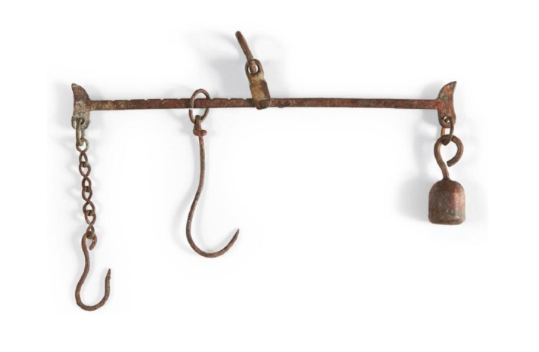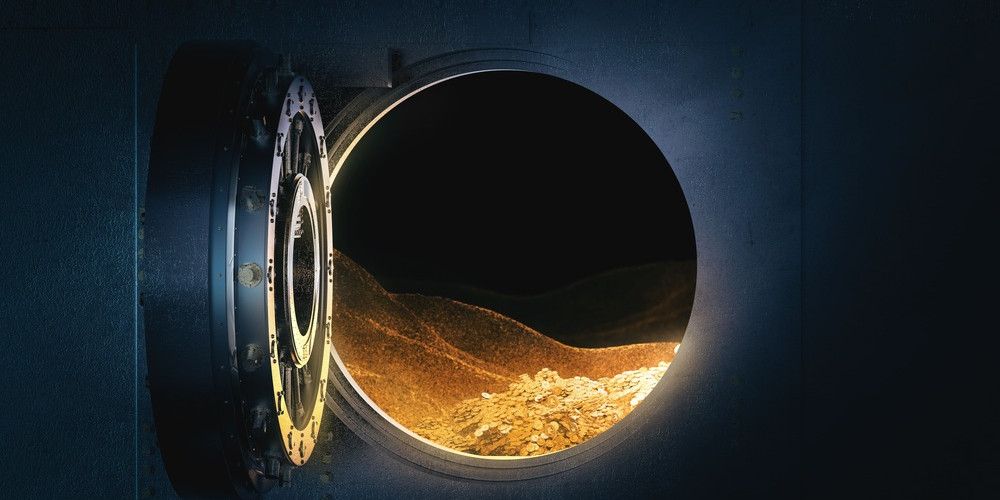The ounce is now the smallest official unit of mass for gold. And yet, strange as it may seem, it does not really weigh an ounce as defined in the measurement system of the (few!) countries that still use it.
How is that possible? The fault would lie with some medieval Champagne fairground merchants.
The ounce resists the International System of Units
Since the end of the 19th century, most countries in the world have agreed on a set of units of measurement for the main dimensions and physical characteristics of material: size, mass, volume, weight, electrical conductivity, speed, power, etc. In 1960, this convention became known as the International System of Units (or SI) and its various constants (the metre, the gram, the second, etc.) are regularly refined in line with new scientific discoveries. Everything would be perfect if it weren’t for one or two grains of sand that sometimes get in the way.
An International System… but not completely
The first problem is that there are three countries that have not officially recognised the IS – and therefore do not use it – namely Liberia, Burma… and the United States! And when one of the world’s leading economic and commercial powers refuses to use a system that is recognised and deployed everywhere else, it sometimes causes problems.
Especially since the primary objective of unit standardisation was to facilitate trade by eliminating the errors and approximations that were bound to occur when, for example, quantities had to be converted between several geographical areas that did not use the same system of measurement. It should be noted that many Anglo-Saxon and Commonwealth countries, in particular the United Kingdom and Australia, have in fact only adhered in principle to the International System. They still largely (if not almost officially) prefer the same system as the Americans, based on ounces, pounds or inches, which they call the Imperial System.
When history and tradition are stronger than standardisation
The second problem is that some areas remain fiercely attached to traditional measures. It is becoming increasingly difficult to find justifications for these other than nostalgic ones. And they sometimes make calculations and comparisons extremely difficult.
For example, oil production is measured in barrels, i.e. 159 litres, in memory of the first barrels found in Pechelbronn, Alsace, which were used to collect the production of one of the world’s first oil operations in 1735. Another example is that diamonds and other gems are still weighed in carats, i.e. 0.2g, in a distant reference to the carob seed, the fruit of a small Mediterranean tree whose seeds were known (mistakenly!) to be relatively regular and were used as weights to measure quantities of food in ancient times.
Finally, gold, the precious metal par excellence, continues to be broken down into ounces despite its importance in the international financial markets. But ounces of 31.1034768 g. And this is where it becomes a problem, because an ounce, for those countries that continue to use the Imperial System, weighs 28.35 grams. So where does this 31 grams and changed ounce come from?
We are not talking about the same ounce
For purists, an ounce is one twelfth of a pound. But funnily enough, the word ‘ounce’ comes from the old word onza (hence the symbol ‘oz’, by the way) which is more reminiscent of the number ‘eleven’, not really ‘twelve’. There are several possible reasons for this, but one of them, quite probably, goes back to Roman times.
Eleven scales for a twelve-ounce pound?
Indeed, on the markets, the first concern of merchants and customers alike has always been to agree on the weight of the goods traded. Hence the invention of scales, which in Roman times generally consisted of a long wooden or metal rod (the beam) separated into two sizeable branches by a handle that was also used to suspend it. A reference weight was fixed to one of the branches; on the other, the products intended for the customer were suspended by means of a hook that was slid from one scale to the next until a balance was found, thus marking the real weight of the goods. This system lasted for a long, long time, and you can still find old ‘Roman scales’ on eBay that were used by early 20th century traders.
These ‘newer’ scales were of course based on the decimal system to measure masses in grams and kilograms. And on most of them, you can see that they had 9 divisions, allowing you to weigh fruit and vegetables. For example, you could move the pan from one notch to the next, each representing 100 grams, until you reached equilibrium; a tenth division became useless because it was the end of the beam, and you only had to add an extra weight to the reference pan to go to the next kilogram.

In ancient times, masses were not calculated in base 10 but rather in base 12, with the pound as the unit of reference. It is therefore reasonable to assume that the scales of antiquity also worked on this basis and thus had 11 intermediate graduations, each corresponding to … an ounce.
The first standardisation with the Avoirdupois system
Well, we now know why an ounce is called an ounce, but that doesn’t answer the initial question: the difference in weight between the ounce and the ounce of gold itself. In reality, the ounce has taken on numerous values, generally between 23 and 33 of our current grams, depending on the era and region concerned. However, by the end of the Middle Ages, a certain consensus had been established around a unified system of mass based on the avoirdupois pound, which is still used today in the United States and, as mentioned above, to varying degrees in everyday life in the United Kingdom, Canada, New Zealand, Australia and certain former British colonies. This pound of pea (1 lb) corresponds exactly to 453.59237 grams, divided into… 16 ounces of 28.349523125 grams.
Now, it’s true, the ounce is no longer the “twelfth part of a pound” but we now have a unified measure for all that tells us that an ounce is now about 28.35 grams.
Except for gold.
The troy ounce, a medieval concession to the rich English customers of the city of Troyes
While the “avoirdupois” system was developing throughout Europe, the town of Troyes, in Champagne, which was already known for its fairs, saw merchants and buyers from all over the West flock to the town, leading to the local development of numerous industrial trades such as textiles, tanning, paper-making, dyeing and… goldsmithing.
It is thought that the town even became an important place for the trade in precious metals in Europe. Since most of their rich buyers came from England, Germany and Holland, the town authorities deliberately favoured the system of weights and measures that had been in force in these countries for a very long time. This system was used to calculate the weight of gold, silver and even medicinal remedies (!), in order to simplify commercial exchanges on fair days. Derived from the Roman measure, it was based on a pound of 373.24 grams divided into 12 ounces of 31.103 grams each.
Here we are!
And so as not to be confused with the “official” ounce of the Avoirdupois system, this “ounce” reserved for precious metals was called the troy ounce, in honour of the city of Troyes.
Auteur et consultant depuis plus de vingt ans dans le domaine de la communication stratégique, il a plusieurs fois travaillé pour le compte d'entreprises financières dont il décrypte aujourd'hui les coulisses et les mécanismes économiques de base à l'intention du plus grand nombre.


